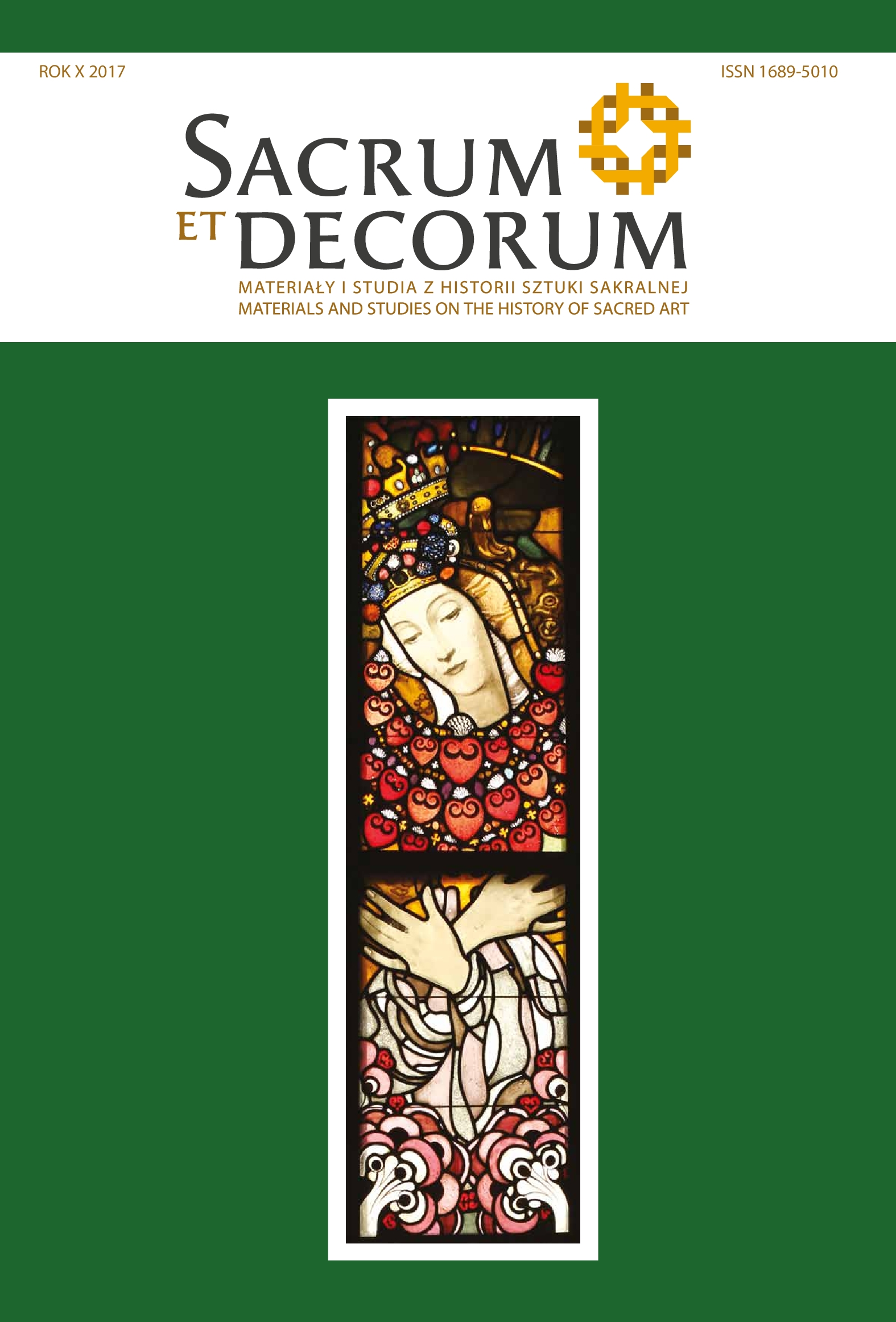Sztuka religijna na wystawach Wiener Secession i Künstlerbund Hagen (1898–1933)
Słowa kluczowe:
Wiener Secession, Hagenbund, Szkoła z Beuron, nowoczesna sztuka religijna, politykaAbstrakt
W artykule przedstawione zostały konteksty, w jakich w dwu ważnych dla sztuki nowoczesnej ośrodkach w Wiedniu (Wiener Secession, Hagenbund) pojawiały się dzieła stricte religijne i parafrazujące motywy biblijne oparte o niekanoniczne interpretacje. W Wiener Secession co jakiś prezentowano pojedynczo prace znanych artystów dawnych o tej tematyce (np. Rubensa), towarzyszyły im specjalne aranżacje wnętrz. Pokazywano też ekspozycje, gdzie obrazy, mozaiki, witraże i rzeźby opowiadały nowoczesnym językiem o bohaterach Starego i Nowego Testamentu, prezentowano ponadto sprzęty liturgiczne oraz projekty architektoniczne kaplic i kościołów. Pierwszą dużą wystawą tego rodzaju był pokaz benedyktynów z Beuron (1905), a następną ekspozycja sztuki chrześcijańskiej i rzemiosła artystycznego, urządzona przez Österreichische Gesellschaft für Christliche Kunst na przełomie lat 1925/1926. Autorzy tekstów w katalogu tej drugiej ekspozycji wskazywali konieczny kierunek rewolucyjnych zmian plastycznych w wyposażeniu wnętrz kościelnych, uważając, że bez związku sztuki w świątyniach ze współczesną, nowatorską estetyką nie będzie możliwe propagowanie idei chrześcijańskich. Dostrzegali również konieczność estetycznej i religijnej edukacji wiernych, która miała doprowadzić do akceptacji form nowoczesnych w sztuce kościelnej. W Künstlerbund Hagen (Hagenbund) poza okazjonalnie prezentowanymi dziełami związanymi z topiką chrześcijańską dwukrotnie zorganizowano interesujące pokazy religijnej sztuki dawnej: w roku 1929 ekspozycję ikon z XII–XVII wieku z terenów ZSSR, a w 1933 wystawę austriackiej rzeźby gotyckiej w ramach Katholikentag. Oba te, starannie przygotowane wydarzenia były wyraźnie, chociaż w odmienny sposób, związane z polityką, co omówiono w artykule. Formy ikon i gotyckich rzeźb odpowiadały dążeniom nowoczesnej sztuki: dwuwymiarowości oraz dramatycznej, a czasem – agresywnej prymitywizacji ekspresji. Chociaż prezentacja dzieł zaangażowanych religijnie nie leżała w programowych założeniach Wiener Secession i Hagenbundu, to spotkanie konserwatywnych idei z nowoczesnymi tendencjami plastycznymi dawało na ich wystawach twórcze efekty pozostające w kontrze do „sacharynowej słodyczy” oficjalnej sztuki kościelnej.Downloads
Pobrania
Opublikowane
Jak cytować
Numer
Dział
Licencja
Prawa autorskie (c) 2017 Sacrum et Decorum

Utwór dostępny jest na licencji Creative Commons Uznanie autorstwa – Użycie niekomercyjne – Bez utworów zależnych 4.0 Międzynarodowe.
Zgodnie z polityką Open Access autorzy zachowują pełnię praw autorskich do swoich artykułów – bez ograniczeń.
Autorzy mogą deponować swoje artykuły w wybranym przez siebie repozytorium.


